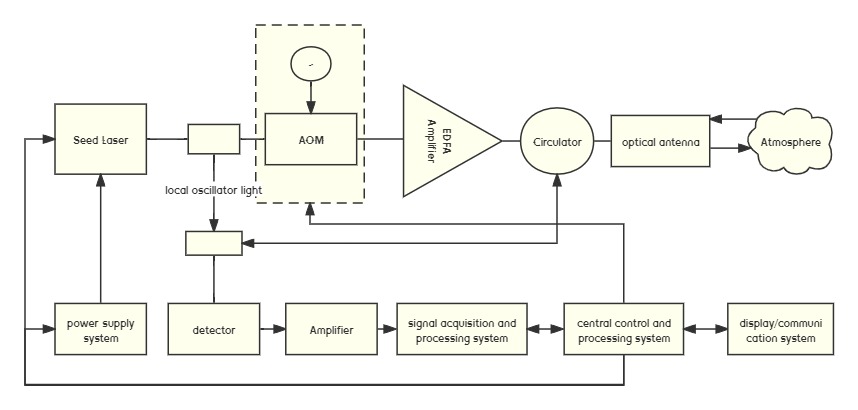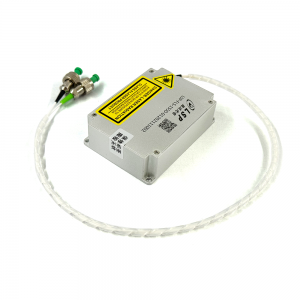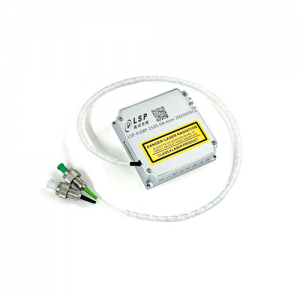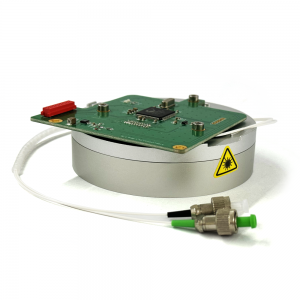Automotive LiDAR Background
From 2015 to 2020, the country issued several related policies, focusing on 'intelligent connected vehicles' and 'autonomous vehicles'. At the beginning of 2020, the Nation issued two plans: Intelligent Vehicle Innovation and Development Strategy and Automobile Driving Automation Classification, to clarify the strategic position and future development direction of autonomous driving.
Yole Development, a worldwide consulting firm, published an industry research report associated with the ‘ Lidar for Automotive and Industrial Applications’, mentioned that the lidar market in the Automotive field can reach 5.7 billion US dollars by 2026, it is expected that the compound annual growth rate might expand to more than 21% in the next five years.
What is Automotive LiDAR?
LiDAR, short for Light Detection and Ranging, is a revolutionary technology that has transformed the automotive industry, particularly in the realm of autonomous vehicles. It functions by emitting pulses of light—usually from a laser—towards the target and measuring the time it takes for the light to bounce back to the sensor. This data is then used to create detailed three-dimensional maps of the environment around the vehicle.
LiDAR systems are renowned for their precision and ability to detect objects with high accuracy, making them an indispensable tool for autonomous driving. Unlike cameras that rely on visible light and can struggle under certain conditions like low light or direct sunlight, LiDAR sensors provide reliable data in a variety of lighting and weather conditions. Furthermore, LiDAR’s ability to measure distances accurately allows for the detection of objects, their size, and even their speed, which is crucial for navigating complex driving scenarios.

LiDAR Working Principle Flow Chart
LiDAR Applications in Automation:
LiDAR (Light Detection and Ranging) technology in the automotive industry is primarily focused on enhancing driving safety and advancing autonomous driving technologies. Its core technology, Time of Flight (ToF), works by emitting laser pulses and calculating the time it takes for these pulses to be reflected back from obstacles. This method produces highly accurate "point cloud" data, which can create detailed three-dimensional maps of the environment around the vehicle with centimeter-level precision, offering an exceptionally accurate spatial recognition capability for automobiles.
The application of LiDAR technology in the automotive sector is mainly concentrated in the following areas:
Autonomous Driving Systems: LiDAR is one of the key technologies for achieving advanced levels of autonomous driving. It precisely perceives the environment around the vehicle, including other vehicles, pedestrians, road signs, and road conditions, thus assisting autonomous driving systems in making rapid and accurate decisions.
Advanced Driver Assistance Systems (ADAS): In the realm of driver assistance, LiDAR is used to improve vehicle safety features, including adaptive cruise control, emergency braking, pedestrian detection, and obstacle avoidance functions.
Vehicle Navigation and Positioning: The high-precision 3D maps generated by LiDAR can significantly enhance vehicle positioning accuracy, especially in urban environments where GPS signals are limited.
Traffic Monitoring and Management: LiDAR can be utilized for monitoring and analyzing traffic flow, aiding city traffic systems in optimizing signal control and reducing congestion.
For Remote sensing, rangefinding, Automation and DTS,etc.
Need A Free Consultation?
Trends Towards Automotive LiDAR
1. LiDAR Miniaturization
The automotive industry's traditional view holds that autonomous vehicles should not differ in appearance from conventional cars to maintain driving pleasure and efficient aerodynamics. This perspective has propelled the trend towards miniaturizing LiDAR systems. The future ideal is for LiDAR to be small enough to be seamlessly integrated into the vehicle's body. This means minimizing or even eliminating mechanical rotating parts, a shift that aligns with the industry's gradual move away from current laser structures towards solid-state LiDAR solutions. Solid-state LiDAR, devoid of moving parts, offers a compact, reliable, and durable solution that fits well within the aesthetic and functional requirements of modern vehicles.
2. Embedded LiDAR Solutions
As autonomous driving technologies have advanced in recent years, some LiDAR manufacturers have begun collaborating with automotive parts suppliers to develop solutions that integrate LiDAR into parts of the vehicle, such as headlights. This integration not only serves to conceal the LiDAR systems, maintaining the vehicle's aesthetic appeal, but also leverages the strategic placement to optimize the LiDAR's field of view and functionality. For passenger vehicles, certain Advanced Driver Assistance Systems (ADAS) functions require LiDAR to focus on specific angles rather than providing a 360° view. However, for higher levels of autonomy, such as Level 4, safety considerations necessitate a 360° horizontal field of view. This is expected to lead to multi-point configurations that ensure full coverage around the vehicle.
3. Cost Reduction
As the LiDAR technology matures and production scales, costs are declining, making it feasible to incorporate these systems into a wider range of vehicles, including mid-range models. This democratization of LiDAR technology is expected to accelerate the adoption of advanced safety and autonomous driving features across the automotive market.
The LIDARs on the market today are mostly 905nm and 1550nm/1535nm LIDARs, but in terms of cost, 905nm has the advantage.
· 905nm LiDAR: Generally, 905nm LiDAR systems are less expensive due to the widespread availability of components and the mature manufacturing processes associated with this wavelength. This cost advantage makes 905nm LiDAR attractive for applications where range and eye safety are less critical.
· 1550/1535nm LiDAR: The components for 1550/1535nm systems, such as lasers and detectors, tend to be more expensive, partly because the technology is less widespread and the components are more complex. However, the benefits in terms of safety and performance may justify the higher cost for certain applications, especially in autonomous driving where long-range detection and safety are paramount.
[Link: Read More about the comparison between 905nm and 1550nm/1535nm LiDAR]
4. Increased Safety and Enhanced ADAS
LiDAR technology significantly enhances the performance of Advanced Driver-Assistance Systems (ADAS), providing vehicles with precise environmental mapping capabilities. This precision improves safety features such as collision avoidance, pedestrian detection, and adaptive cruise control, pushing the industry closer to achieving fully autonomous driving.
FAQs
In vehicles, LIDAR sensors emit light pulses that bounce off objects and return to the sensor. The time it takes for the pulses to return is used to calculate the distance to objects. This information helps create a detailed 3D map of the vehicle's surroundings.
A typical automotive LIDAR system consists of a laser to emit light pulses, a scanner and optics to direct the pulses, a photodetector to capture the reflected light, and a processing unit to analyze the data and create a 3D representation of the environment.
Yes, LIDAR can detect moving objects. By measuring the change in position of objects over time, LIDAR can calculate their speed and trajectory.
LIDAR is integrated into vehicle safety systems to enhance features such as adaptive cruise control, collision avoidance, and pedestrian detection by providing accurate and reliable distance measurements and object detection.
Ongoing developments in automotive LIDAR technology include reducing the size and cost of LIDAR systems, increasing their range and resolution, and integrating them more seamlessly into vehicles' design and functionality.
[link:Key Parameters of LIDAR Laser ]
A 1.5μm pulsed fiber laser is a type of laser source used in automotive LIDAR systems that emits light at a wavelength of 1.5 micrometers (μm). It generates short pulses of infrared light that are used to measure distances by bouncing off objects and returning to the LIDAR sensor.
The 1.5μm wavelength is used because it offers a good balance between eye safety and atmospheric penetration. Lasers in this wavelength range are less likely to cause harm to human eyes than those emitting at shorter wavelengths and can perform well in various weather conditions.
While 1.5μm lasers perform better than visible light in fog and rain, their ability to penetrate atmospheric obstacles is still limited. Performance in adverse weather conditions is generally better than shorter wavelength lasers but not as effective as longer wavelength options.
While 1.5μm pulsed fiber lasers may initially increase the cost of LIDAR systems due to their sophisticated technology, advancements in manufacturing and economies of scale are expected to reduce costs over time. Their benefits in terms of performance and safety are seen as justifying the investment.The superior performance and enhanced safety features provided by 1.5μm pulsed fiber lasers make them a worthwhile investment for automotive LIDAR systems.




